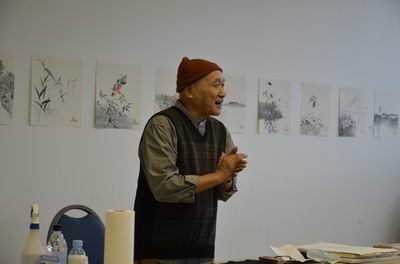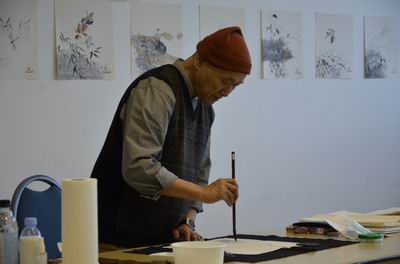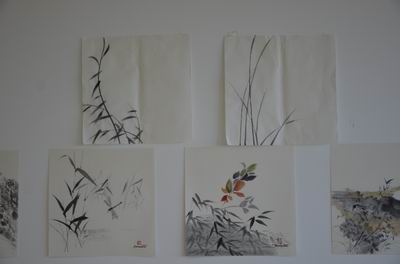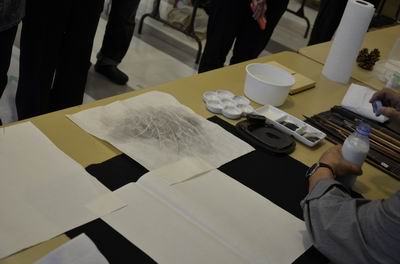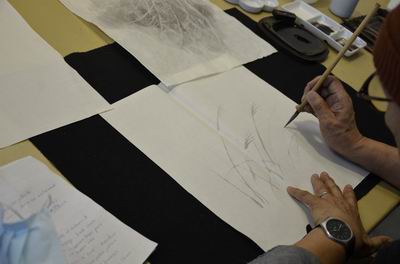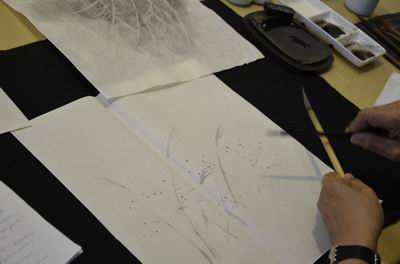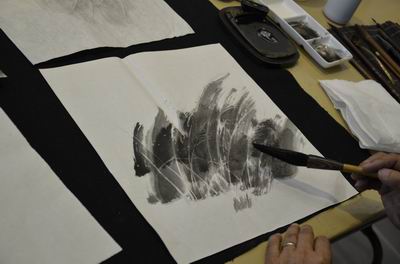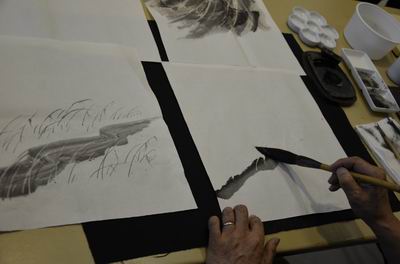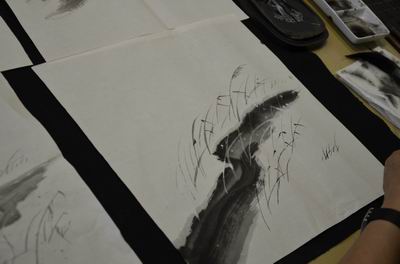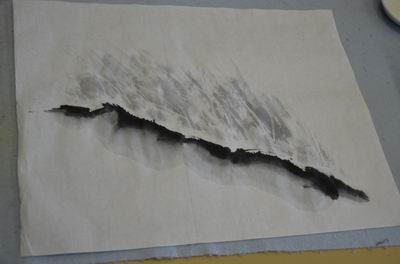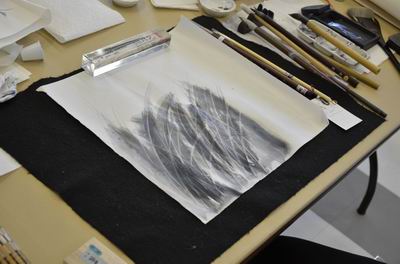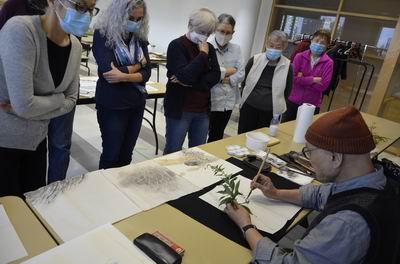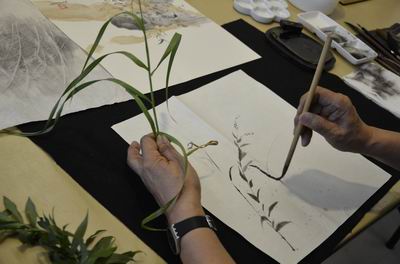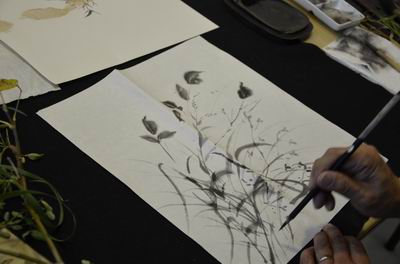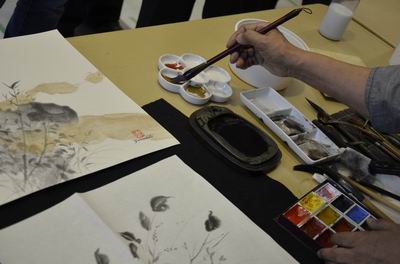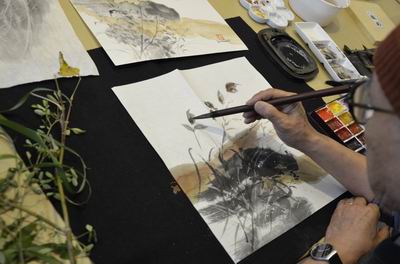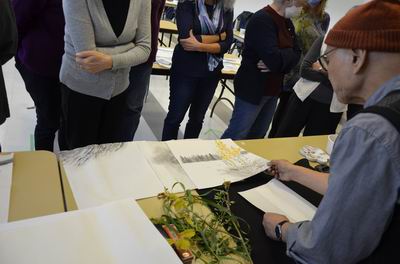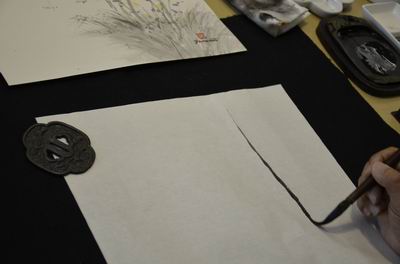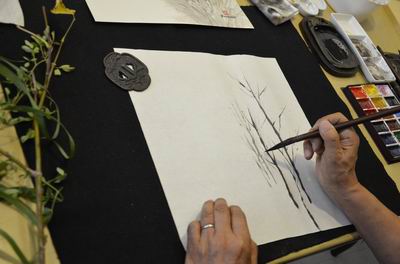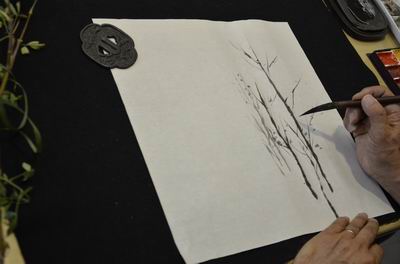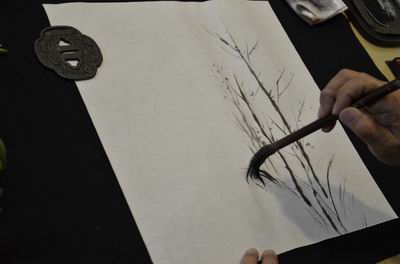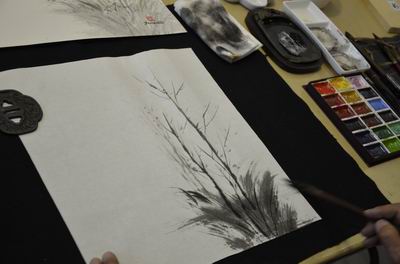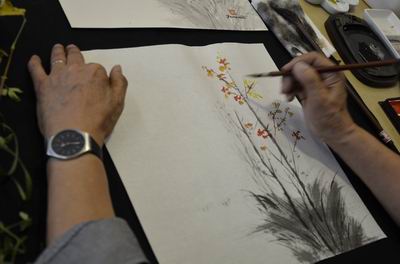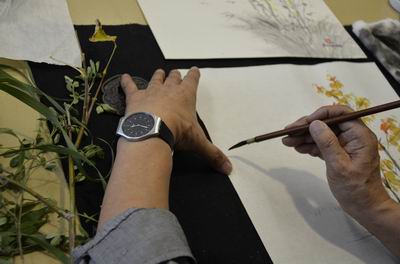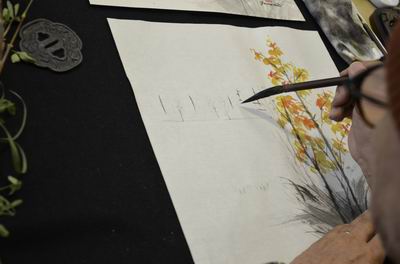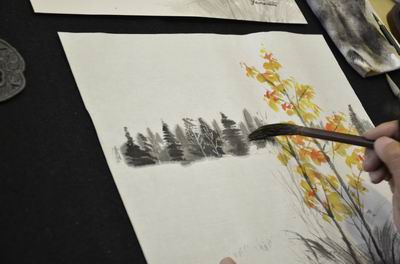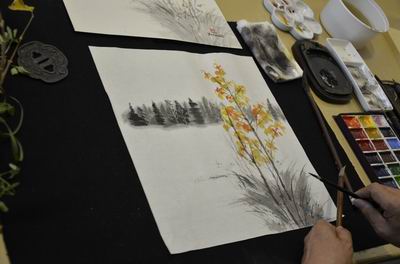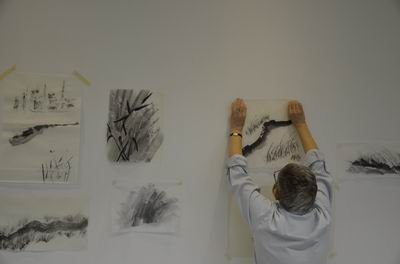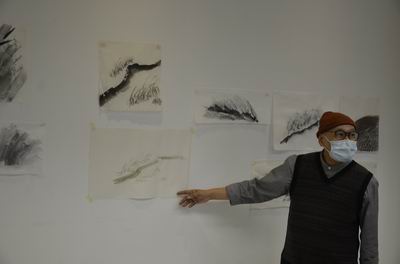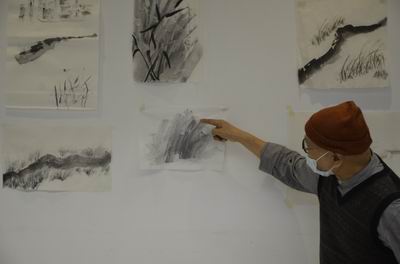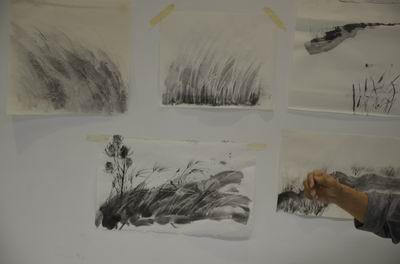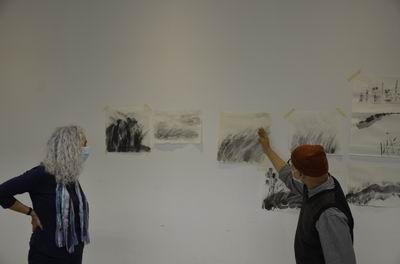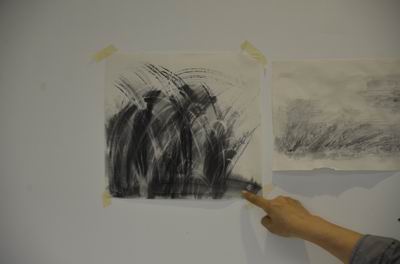Landscapes with Hiroshi Yamamoto - November 13th, 2021
Surrounded by his paintings of nature, Hiroshi Yamamoto told artists at his workshop that a landscape painting uses a collection of well-known natural images like grasses, trees, and water. Techniques can make these natural images come to life in a painting.
Hiroshi Yamamoto began with long continuous brush strokes which create flowing images of blades of grass. He painted in a standing position with his brush held at the mid point.
The result was striking, elegant paintings of blades of grass and leaves.
Painting with milk (2% recommended) adds the dynamic effect of grasses in motion when a wash of ink is layered over top later.
Begin with brush strokes that will have a light grey tone. Vary the lengths and direction of the blades of grass.
Dots add spontaneity to an image.
A wash with a large brush reveals the grass. Hiroshi Yamamoto's large brush strokes also mimicked the smaller blades of grass creating a captivating dynamic effect.
One way of starting a landscape is to paint the main feature first in one stroke. Hiroshi Yamamoto used a large brush and in one stroke created a river.
He then used a smaller brush to add long grasses beside it. He left space between the the river and the grasses to allow each feature to be better defined. He added a smaller patch of grass removed from the river. This minor addition makes the painting more interesting.
It was our turn to try these techniques. This work mixed the river with flowing grasses created with milk.
This work had wavering grasses within strong vertical strokes of a wash.
On his walks, Hiroshi Yamamoto picks up grasses, plants and branches that interest him. From a pile he brought to the workshop, he picked up one as the start of a painting.
He continued by picking up another plant and added this plant to his painting.
The result of adding various grasses, plants and branches was a painting of a plant collection that you might gather on a walk yourself.
Hiroshi Yamamoto mixed colours for his painting. He prefers natural colours that are subdued with a touch of ink.
He used the colours to highlight some features and also as a wash. The result is a more engaging painting.
A painting that brought the various natural elements demonstrated into one work was next.
A tree in the foreground began with a single brush stroke.
Several other trees of various sizes were added. Trees further in the distance were painted in grey tones. Branches from trees should also use variety; that is, be careful that you do not make each branch identical.
Leaves were added though Hiroshi Yamamoto left space for more coloured leaves in a painting that would reflect the fall season.
A large dry brush created a thicket of plants around the tree.
A wash including a counter intuitive horizontal stroke formed the base of the tree.
The coloured autumn leaves were added. Use a variety of shapes and colours, Hiroshi Yamamoto advised, to get a tree that looks like one that you would see in autumn.
In the background of this painting was a forest of mostly pine trees. But where should the line of trees go? Hiroshi Yamamoto suggested that the line of trees should not be exactly at the midpoint of the painting. Two thirds from the bottom of the painting can make a natural looking line of trees.
He added basic tree outlines using milk occasionally.
With a larger brush that had darker ink, Hiroshi Yamamoto created the distinct fir trees in the front. Remember to leave spaces between the trees.
A few black dots were added about the base of the fall tree in the forefront.
We hung our work on the wall for Hiroshi Yamamoto's comments.
This artist created a natural work all in green ink.
Hiroshi Yamamoto liked the strong strokes in this painting and the variety of tones.
All of the techniques practised at the workshop appeared in this painting with blades of grass, a wash of ink and a plant bursting from the ground.
This field of windswept grass caught the motion caused by the wind effectively.
The dynamic force of nature attracted Hiroshi Yamamoto's eye in this painting. It is almost an abstraction on the force of nature.
Time for the artists to venture out into nature for further inspiration.
